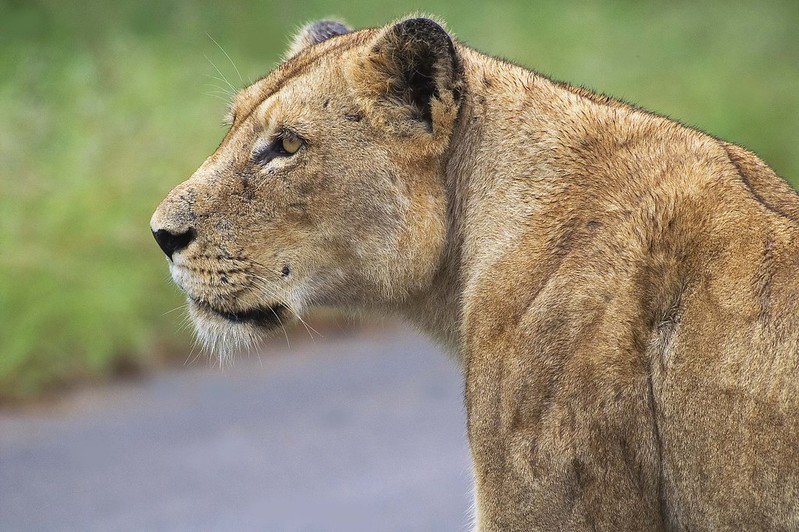美國魚類及野生動物管理局(United States Fish and Wildlife Service,FWS)27日表示,非洲獅(Panthera leo)「有可預見的滅絕危機」,提案將非洲獅列入《瀕危物種法》保護對象。
非洲獅越來越少 將受美國法律保護
世界自然保育聯盟(IUCN)紅色名錄將非洲獅列為「易危」,表示數量正在減少中。近期研究發現,西非獅數量急遽減少,目前只剩下400頭出沒於4處保護區(2005年還有21處保護區見得到西非獅)。
根據最新的估計,中非目前剩下約2,000頭獅子,東非18,000隻,南非11,000隻。目前非洲獅在非洲出沒的範圍還算廣,但是有70%的非洲獅族群集中在10個主要據點。
非洲獅有三大生存威脅,分別是棲地流失、獵物減少和人獅衝突的增加。透過禁止或管制進出口與州際商業活動,外來物種可受到美國瀕危物種法的保護;依據法令,美國也會推廣保育物種的名單資訊、研究,並贊助物種原棲國的保育工作以及人員訓練。
2011年,多個保育組織聯合提交請願書,要求FWS將非洲獅列入瀕危物種法保護名單,FWS依法受理。2012年11月27日,FWS發表了90天調查報告,開始審核非洲獅的存續狀況。27日,FWS針對請願書發表12個月調查報告,確定將非洲獅列入瀕危物種法保護。
「獵獅運動」年殺數百隻 戰利品半數進入美國
每年,戰利品獵人在全球獵殺了數百頭獅子,其中有超過一半最後進入了美國。
「運動狩獵目前並非該物種生存威脅,」美國魚類及野生動物管理局在聲明稿中指出。不過,FWS還是依瀕危物種法提案,為運動狩獵所得之非洲獅戰利品建立審核機制,鼓勵非洲獅來源國,建立起以科學為基礎的物種管理計畫。
保育團體表示,有力的審核機制相當關鍵。「非洲獅數量在過去30年間減少了超過一半。繼續放任戰利品狩獵只是讓該物種存續狀況雪上加霜。」國際動物福利基金會北美區主任Jeff Flocken說。
「審核系統的獎勵辦法鼓勵從事非洲獅保育的個人和國家,讓魚類及野生動物管理局將能運用更多的保育資源。」魚類及野生動物管理局長Dan Ashe說。
The U.S. Fish and Wildlife Service today proposed listing the African lion as threatened under the Endangered Species Act, saying its analysis finds the lions are “in danger of extinction in the foreseeable future.”
The three main threats facing the African lion, Panthera leo, at this time are habitat loss, loss of prey animals, and increased human-lion conflict.
“Sport-hunting was not found to be a threat to the species at this time,” the Service said in a statement announcing the proposal.
Still, the Service is also proposing a rule under the Endangered Species Act that would establish a permitting mechanism for the importation of sport-hunted lion trophies, provided that the lions originate from countries with a scientifically sound management plan for the species.
Conservation groups say a strong permitting system is critical because the U.S. imports over half of the hundreds of lion trophies brought home by trophy hunters globally each year.
African lions are still found across a large range in Africa, but about 70 percent of the current African lion population exists in only 10 major strongholds, the Service said
“By providing incentives through the permitting process to countries and individuals who are actively contributing to lion conservation, the Service will be able to leverage a greater level of conservation than may otherwise be available,” said Fish and Wildlife Service Director Dan Ashe.
The authoritative Red List of Threatened Species maintained by the International Union for the Conservation of Nature, IUCN, lists the African lion as Vulnerable, with a population trend that is “declining.”
The U.S. Endangered Species Act benefits foreign species by prohibiting or regulating their import, export, commercial activity, interstate commerce and foreign commerce.
The Act can generate conservation benefits such as increased awareness of listed species, research efforts, funding for in-situ conservation of the species in its range countries, and limited funding for programs to conserve listed species in foreign countries, including personnel and training.
In 2011, a petition from a coalition of organizations requesting the Service to list the African lion as endangered prompted a formal review under the Act. On November 27, 2012, the Service published a positive 90-day finding and initiated a status review of the subspecies.
In today’s 12-month finding on the petition, the Service determined that listing the African lion as threatened throughout its entire range is warranted.
“Lion numbers have declined by more than half in the last three decades. To allow trophy hunting to continue unabated is kicking an animal while it’s already down,” said Jeff Flocken, North American regional director, International Fund for Animal Welfare.
A recent study found that the West African lion population is critically imperiled with roughly 400 lions in total found in only four protected areas (down from 21 in 2005).
The most current estimates state that there are an estimated 2,000 lions left in Central Africa; 18,000 in East Africa and 11,000 in Southern Africa.
※ 全文及圖片詳見:ENS








